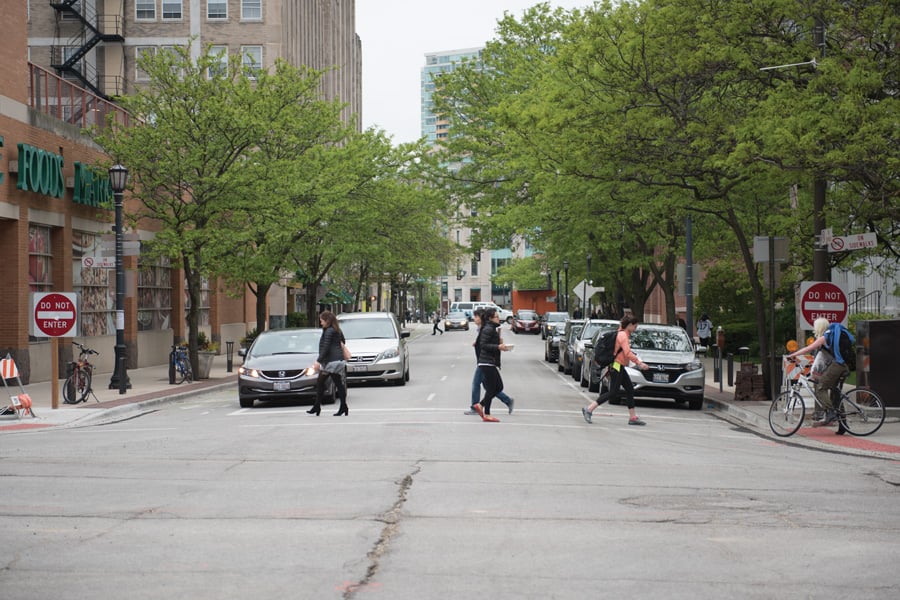Northwestern students say walkability around campus builds community, draws them to local businesses
Daily file photo by Katie Pach
People walk through downtown Evanston. Some Northwestern students said they enjoy the walkability of the area because it allows them to visit local stores and restaurants.
March 30, 2023
For some Northwestern community members from less walkable cities around the country, downtown Evanston provides a welcome change.
According to Walk Score, a website that provides local amenity guides for different cities and towns, Evanston is “very walkable” and has a walkability score of 76.
McCormick Prof. Joseph Schofer said Evanston has done well in implementing its sidewalk system, which has multiple benefits. These include increased safety for pedestrians and others.
“The density and the infrastructure makes a difference,” Schofer said. “It gets some people out of their cars, gives them exercise, takes cars off the streets and reduces the need for parking.”
Weinberg freshman Margaret Sprigg-Dudley had a very different experience when she lived in Loveland, Ohio. She said her hometown has limited public transportation to nearby Cincinnati.
There is infrastructure for transportation from Evanston into Chicago, including the Chicago Transit Authority and the Metra.
“I sometimes forget when I go back home that, ‘Oh, I can’t take the El to get downtown,’” Sprigg-Dudley said.
Even when Sprigg-Dudley wants to stay local and walk around Evanston, she said it’s much easier to access all the local businesses than it is in Loveland.
She said that as someone who worked at a family-owned coffee shop in her hometown, she believes in the importance of local businesses in building community.
“Where I worked, we were big on working with the other businesses,” Sprigg-Dudley said. “Whenever the town had events, we would engage with their events. And I feel you get more of that sense of community when you go to the local businesses … You get to meet everyone there and get to connect with them more.”
Communication sophomore Evelyn Jenkins is from Dubuque, Iowa. It’s a city where most people drive, she said.
Jenkins said although there is a bus system in Dubuque, she didn’t often use it and instead opted to travel by car. Traveling downtown requires a car, but she added that it’s easy to navigate, drive and park.
Within Evanston city limits, Jenkins said, the options available for dining and grocery shopping are more robust than in her hometown.
“Evanston has so many more local restaurants than Dubuque, and I think that is because of that walkability,” Jenkins said.
But Schofer said while Evanston’s pedestrian infrastructure is stronger than in many parts of the nation, it still has its shortcomings.
Although Evanston is walkable near NU’s campus and CTA trains can easily take students to downtown, Schofer said walkability decreases farther away from the downtown area. Residents have said broken and uneven sidewalks around Main Street have caused accessibility issues for them, and city infrastructure — such as train tracks — has cut off parts of the 5th Ward from other neighborhoods. This disparity was an intentional effort by the city to restrict movement between the historically Black 5th Ward and majority-white wards.
“Evanson, like all of these communities, talks a really good game about safety and pedestrian safety,” Schofer said. “But when you get away from the center of the city, signing and marking gets shaggier. It’s not as good.”
Schofer said these areas with more limited infrastructure can be dangerous for pedestrians.
While students appreciate downtown Evanston’s walkability, Schofer said there are still issues with some sidewalks. But overall, Schofer said, Evanston’s infrastructure is “pretty darn complete.”
Email: [email protected]
Twitter: @SQPowers04
Related Stories:
— CARP transportation plans should address environment, not just climate, organizers say


